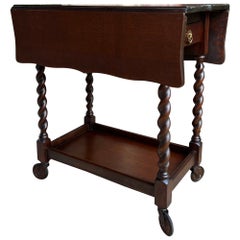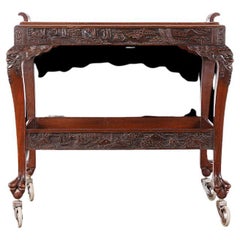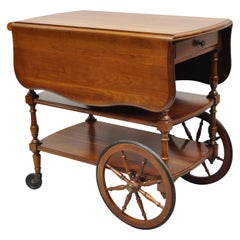Colonial Tea Carts
Vintage 1930s British British Colonial Carts and Bar Carts
Oak
Recent Sales
Mid-20th Century Hong Kong British Colonial Carts and Bar Carts
Teak
Mid-20th Century North American British Colonial Carts and Bar Carts
Cherry
Vintage 1930s English British Colonial Dry Bars
Glass, Walnut
People Also Browsed
Antique Early 1900s French Vanities
Marble
Mid-20th Century Swedish Art Deco Desks and Writing Tables
Birch
Early 20th Century Musical Instruments
Mahogany
Early 20th Century Asian Rustic Decorative Baskets
Iron
2010s Greek Modern Dining Room Tables
Wood, Lacquer
Mid-20th Century American Mid-Century Modern Musical Instruments
Chrome
Antique 19th Century German Black Forest Ladders
Walnut
Antique 19th Century Italian Baroque Rocking Chairs
Silver Leaf
Antique 19th Century European Industrial Carts and Bar Carts
Wood
Early 20th Century English Arts and Crafts Musical Instruments
Walnut
Antique 19th Century German Victorian Musical Instruments
Other
Vintage 1920s American Biedermeier Musical Instruments
Gesso, Birdseye Maple, Maple, Giltwood
21st Century and Contemporary Portuguese Beds and Bed Frames
Fur, Wood
21st Century and Contemporary American Musical Instruments
Aluminum
Antique Mid-19th Century British Victorian Scientific Instruments
Brass
20th Century English Victorian Ladders
Iron
A Close Look at British-colonial Furniture
Typically made of mahogany, teak or bamboo and featuring a range of fabrics and prints with botanical patterns, antique British Colonial furniture and decor varies as it involved local materials and techniques and spanned centuries of design styles.
As the British Empire expanded from the 16th to the 20th century, its conquest and control of colonies around the world bolstered its wealth through the extraction of resources. Including colonies in the Americas, Africa, Asia and Australasia, this spread of often violent subjugation imposed British culture, language and faith on Indigenous peoples. The design of homes was included in this expression of imperial power, with government officials, merchants and military officers creating homes mimicking the luxuries they were used to in England.
Local artisans were commissioned to replicate British designs, resulting in versions of Regency, Chippendale, Sheraton and other styles of furniture being crafted from mahogany, rosewood, ebony and teakwood as opposed to beech and oak, which were more common in Europe. Whereas the colonial furniture for the Portuguese and Dutch regularly had motifs of indigenous flora and fauna, the British tended to want more exact reproductions of their home country’s designs.
To escape the summer heat in places such as India and the Caribbean, British colonizers relocated to airy houses in the hills or plantations, leading to foldable chairs and collapsible desks in the style of military campaign furniture. Rather than upholstery as they might have in Europe, chairs and sofas in the British Colonial style had rattan and cane seating for these higher temperature climates. The contrast between the light textiles and the dark colors of the sturdy furniture became a defining aesthetic of British Colonial interiors.
Find a collection of antique British Colonial outdoor furniture, seating, bedroom furniture, decorative objects and other items on 1stDibs.
- When were tea carts popular?1 Answer1stDibs ExpertFebruary 17, 2023Tea carts were popular from the early 19th century through the 1930s. However, some people still use tea carts for serving or as decorative accents in their homes. Shop a range of tea carts on 1stDibs.


